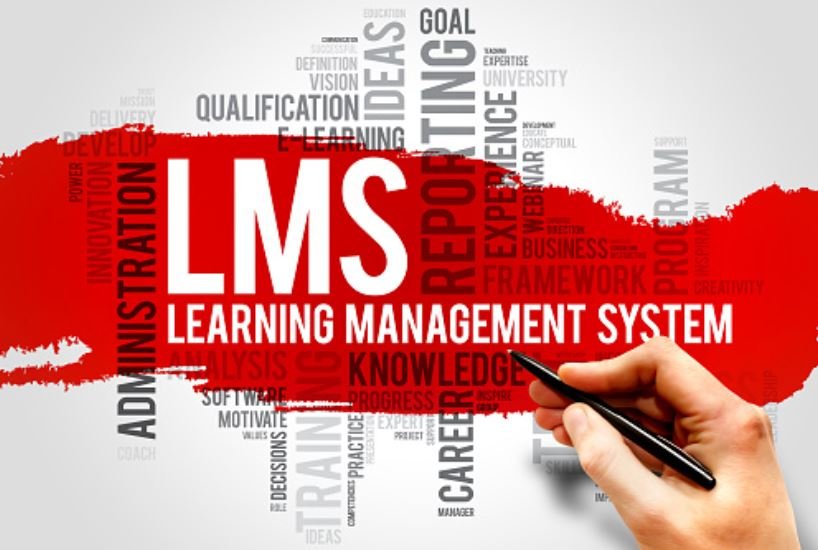The e-learning market has been expanding for a few years and provides more diverse and thorough knowledge in different fields. There is a huge variety of formats, ranging from intensive master classes and video lessons to a Master’s degree-level course.
Through educational/academic platforms managed by Learning Management Systems, classes or courses can be readily delivered to the audience.
If you are a business person, this would be a good moment to create your own LMS and use the current trend to your advantage. You can get assistance from organizations that offer custom LMS development services.
If you want to know more about LMS, here are step-by-step guidelines for successful LMS development services:
How to develop an LMS platform
A software or SaaS platform that enables users to schedule, create, and access educational resources is the typical definition of an LMS. Or, to put it another way, it’s a website where students may access learning resources and communicate with instructors and other students.
This tries to make education more flexible and is comparable to distance learning. Different levels of access are granted to users of learning management systems.
Every login has a set amount of restricted capabilities. Thus, logging in as a student permits reading courses and discussing the subject with teachers and classmates.
Logging in as a teacher provides task delegation, course building, and student grading. Logging in as an administrator allows one to manage users and add content.
For maintaining internal knowledge and monitoring the success of staff training, businesses use specialized learning management systems. For compliance and specialized training, trade societies employ it.
A learning management system can be used by self-learners and businesspeople to enroll in intensive courses in their chosen professions.
Step-by-Step guide for custom LMS Development
Step 1- Choose a type of LMS
It is not correct to assume that all businesses, from schools to hospitals, utilize the same kind of learning management system (LMS).
It is because each business or training facility has a unique need, particularly when students or professionals are involved in industrial training. The LMS used in the corporate and educational sectors will therefore differ.
LMS comes in four different varieties, each of which can be used depending on the needs.
First, is classic LMS, which is the type of lms developmentthat is most often used. It offers the most fundamental capabilities and can be applied to both business and education.
Second, more interactive LMSs were developed as part of contemporary learning management systems that are learner-centric.
The third is the learning management ecosystem, which unifies all e-learning tools and solutions in one location. The fourth is a specifically designed learning platform.
Step 2- Market investigation
Before creating any type of SaaS solution, market research is absolutely essential. You need to be aware of competing items that are already on the market and who their target consumers are.
Ask individuals about the present LMS they are using, why they feel comfortable using it, and if not, what the drawbacks are. This will assist you in identifying any specific LMS considerations you need to make to address the issues of your target audience.
Choose a suitable company model based on your market analysis as the last step.
Step 3- Build your team.
Picking a team to implement your idea is essential to the overall success of the project. You can base your decision on ratings, costs, referrals, or communicating with potential candidates.
Typically, a company’s reputation and level of experience are reliable indicators. Therefore, you could wish to choose development firms that are well-known in the industry. They should have a sizable number of profitable cases in their portfolios.
Additionally, it is a favorable indicator if a software development company has received awards and positive client reviews.
Step 4- Administration training
Your company’s LMS administrators are the ones who will make sure the system continues to function properly. If users ever encounter any problems while utilizing the system, they are the point of contact.
They will also serve as your LMS internal expert, which means they will instruct users and occasionally facilitate on how to use the system.
The administrator’s most crucial function is serving as the company’s initiative champion, at least while you are in the LMS implementation phase. Remember that the best lms
developers are the ones who are most familiar with the system and know the ins and out of it.
Step 5- Create a schedule and plan for the LMS implementation
Depending on the type of LMS you select, the implementation time will vary. A hosted or cloud-based LMS, where the system is housed on the vendor’s server, may take less time.
But it may take extra time to set up that LMS on your own server. A more accurate timeline can be provided by your IT department or the LMS vendor.
The time required to implement the LMS depends on how many users accounts you plan to move and integrate with. Keep your schedule reasonable and allot enough time before the launch to achieve each benchmark.
Step 6- Select the necessary set of features.
The functionality of your upcoming LMS needs to be finalized now. List both mandatory and optional features, then consider ways to optimize and reduce the list.
Keep in mind that testing and implementing each feature will require time and effort. Therefore, the choice of features will directly affect the cost of your learning management system.
Make a second list of helpful features that you might wish to add to your LMS after it is out. It will be easier to deploy those extra features with later software upgrades if the development team can plan ahead.
Step 7- Make a plan for the design.
You should not undervalue the significance of UI/UX design for a software product’s success. There is no need to further complicate the design as the routines of teaching and learning are already challenging.
The educational process will be swift and easy with a practical LMS, which will benefit mentors and students alike. So hire lms developer who can create a simple as well as attractive LMS platform.
The corporate colors should be present in a learning management system since it is a brand-related product. Remember that some colors and patterns could make it more difficult for users to focus on the screen by straining their eyes.
Step 8- Introduce it to the marketplace and adjust your LMS in the feedback.
Launch your LMS program as soon as you think the market is ready for it. However, remember that your platform still requires a committed crew to sustain it.
It’s crucial to launch the MVP since it will provide you with a rough indication of how your target market will respond.
Ask them whether they find it difficult to use or simple, whether their issues are being resolved, and what makes your LMS special. You can also ask whether they will think about buying it and other related questions.
Further adjustments must be made on the input from this feedback.
Final Thoughts
Even after the launch, the LMS implementation process continues. For the duration that the LMS is in use, constantly search for methods to enhance the program with the help of LMS development services.
Best training platforms have tested and refined very successful plans for LMS implementation. Asking about the implementation process is important when choosing an LMS services.





